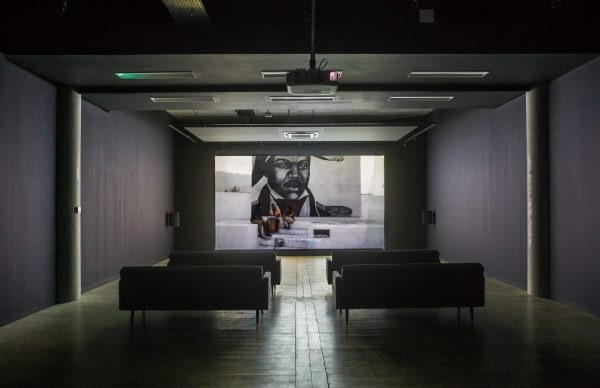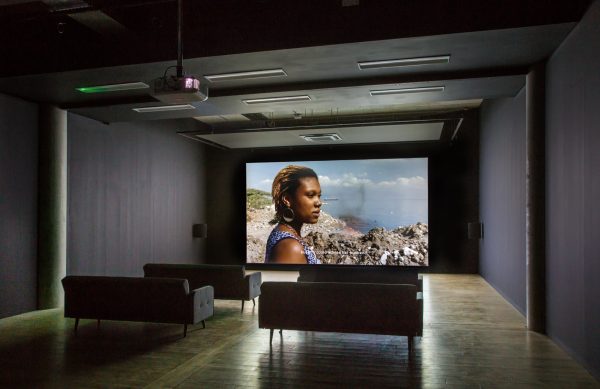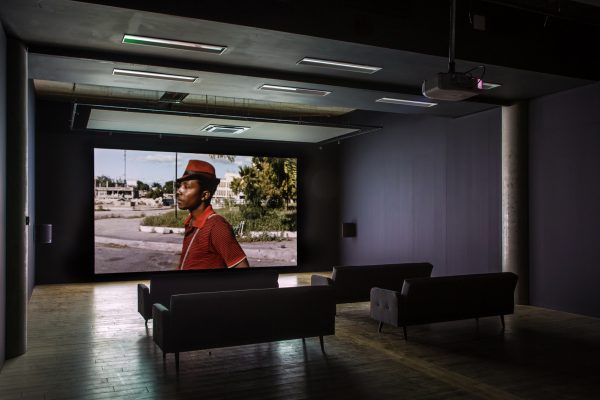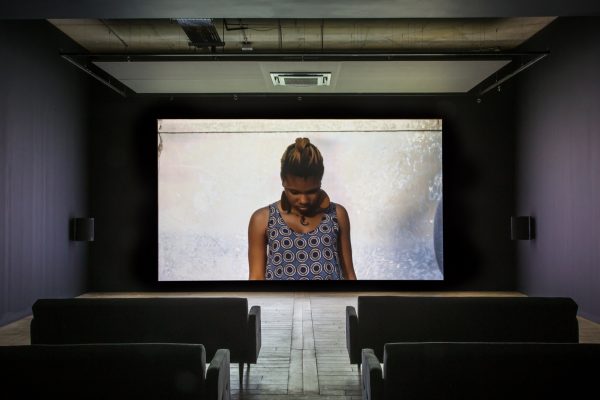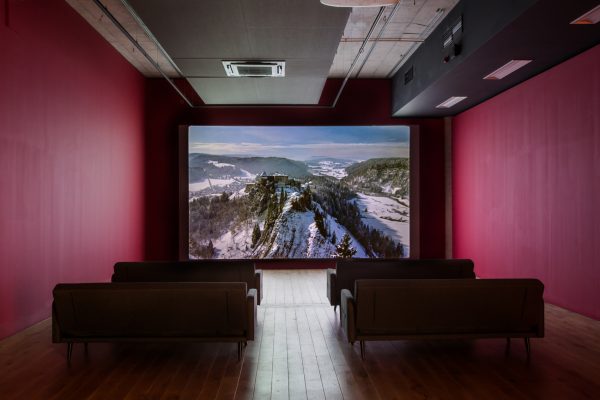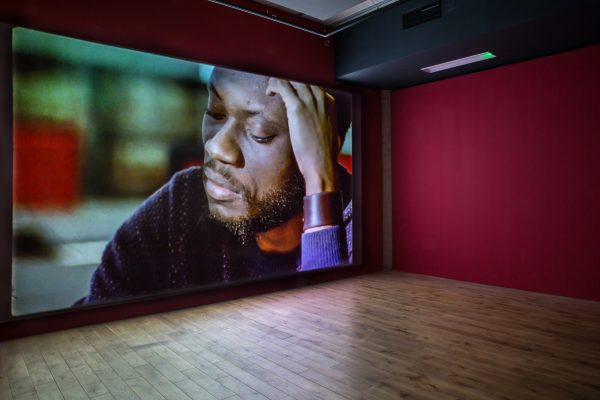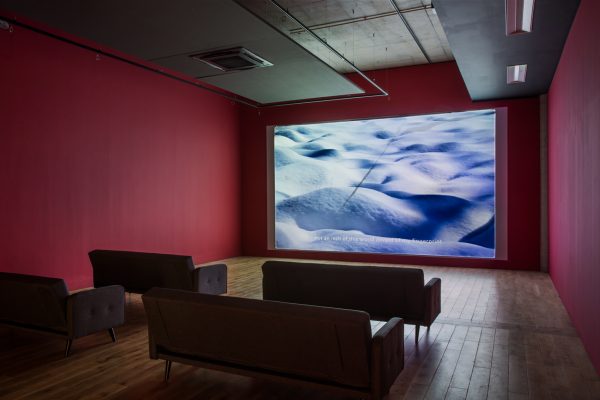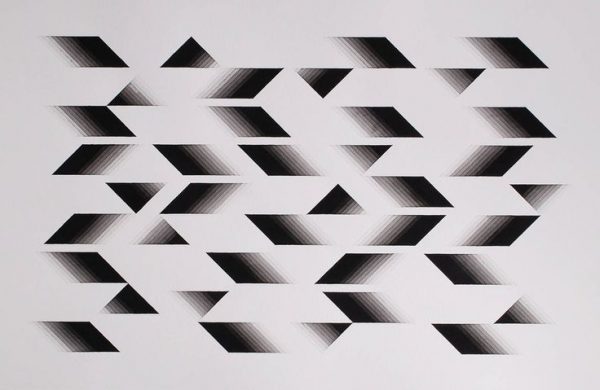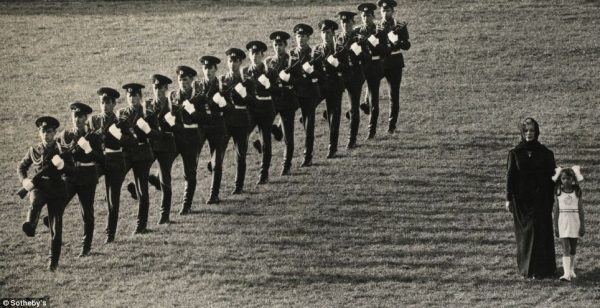In Louis Henderson’s film I build my language with rocks (2017), veins of handwritten Haitian Creole spread across a printed French script, a palimpsest in the making. A group of actors and poets pour over the pages of playwright and theorist Édouard Glissant’s 1961 play Monsieur Toussaint debating turns of phrase, contesting imagery, and teasing it line by line into present day Port-au-Prince. A camera approaches, peering over shoulders, shooting the words bubbling from their hands.
The film opens Louis Henderson’s show ‘Overtures’ at HOME Manchester. Henderson is a British filmmaker living in France, and ‘Overtures’ is characteristic of his works to date, which explore the legacies of colonialism and the entanglement of technology and history. The exhibition takes Haiti as its subject, and the Revolution of 1791 in which slaves and freed people of colour won independence from French colonial rule. As a white European artist, Henderson’s intervention in this time and history has a charged, and under-interrogated, politics.
Overtures follows Henderson’s collaboration with a group of Haitian artists, The Living and the Dead Ensemble, to translate and perform Monsieur Toussaint for Port-au-Prince’s Ghetto Biennale (2017). The play dramatises the dying days of Toussaint Louverture who, born into slavery, went on to lead the Haitian Revolution. Louverture died a prisoner of France in 1803, a year before Haiti’s sovereignty, betrayed by his successor Jean-Jacque Dessalines. Condemned to a cell in French Jura, and banned from writing, he nonetheless spent his final days penning his clandestine memoirs in an early Haitian Creole tongue, hiding the handwritten pages in a handkerchief bound to his head. Henderson takes Louverture’s ghost as the protagonist of ‘Overtures’ . In so doing, Louverture becomes a proxy through which Henderson can enact his critique of history.
Monsieur Toussaint puts French into the mouths of some characters. The project of Henderson with The Living and the Dead Ensemble is to ‘creolise’ the play, filtering out the sediments of colonial power that persist through language. Monsieur Toussaint becomes slam poetry, the betrayal of Toussaint by Dessalines bouncing between actors in a rhythmic call-and-response of Haitian Creole. The group worked collaboratively on this project and contributed to decisions over the films. The artistry of the collective – showcased in the films and their displayed poetry – is the energy that animates the show.
In the exhibitions’ second film, Bring breath to the death of rocks (2018), we encounter the clinical French National Archives where Louverture’s memoirs are filed, ossified, spat dispassionately from Xerox machines. Next, the film plunges us into the caves of French Jura near where Louverture died. The hand of an actor traces the dripping stalagmites and the blood red rocks. Here is the texture of Louverture’s story, its atmosphere, its temperature; here is history repatriated with the body. With this film, Henderson is mounting a critique of the methods through which history is told. It stops short, however, of interrogating how Henderson’s authorship is itself implicated in this process.
Rupturing the smooth passage between ‘Overtures’s’ films is the immersive installation These lowest depths, these sounds (2018), which fills a room midway through the exhibition. A surging animation of a tempestuous sea drenches the room, accompanied by a soundscape of crashing waves and insistent drums produced by the artist João Polido Gomes. This sea confronts us with the brute power of the ocean, reminding us of its role in enabling the flows of colonial power, and as a witness to its crimes. Henderson joins other contemporary artists exploring the violence of (neo)colonialism perpetrated at sea, notably John Akomfrah’s 2015 Vertigo Sea (cited by Henderson), and Sondra Perry’s Typhoon Coming On (2018) which submerges viewers in a digital seascape, her response to the description of brutality captured in J.M.W. Turner’s painting, The Slave Ship (1840).
We meet Louverture a final time in the film We stand our mouths open under the sun (2018), which closes ‘Overtures’. This time reincarnated as voyeur in contemporary Port-au-Prince, he encounters traces of the past – actors reciting Glissant’s play, a monument to Desalines, the faded graves of the cemetery. His task is almost archaeological: to make sense of a past through the fragments it leaves behind.
As we follow Louverture, we are aware of the body behind the lens, the handheld camera moving with its undulating steps. While this nods towards the presence of an author, it does not mitigate the unease that Henderson’s intervention in this space creates. Art history is polluted by the white, male, colonial gaze, and Haitian resilience sits uncomfortably as a spectacle. In the end, ‘Overtures’ passes up the opportunity to reflect on how contemporary European artists and audiences are implicated in the uneven distribution of power that is an enduring legacy of colonialism. I wonder what business this artist has to make claims on this history, this ghost, these lives.
***
The Living and Dead Ensemble is made up of Atchasou, Leonard Jean Baptiste, Mackenon Bijou, Rossi Jacques Casimir, Dieuvela Cherestal, James Desiris, James Fleurissaint, Louis Henderson, Cynthia Maignan, Oliver Marbeouf and Zakh Turin.
